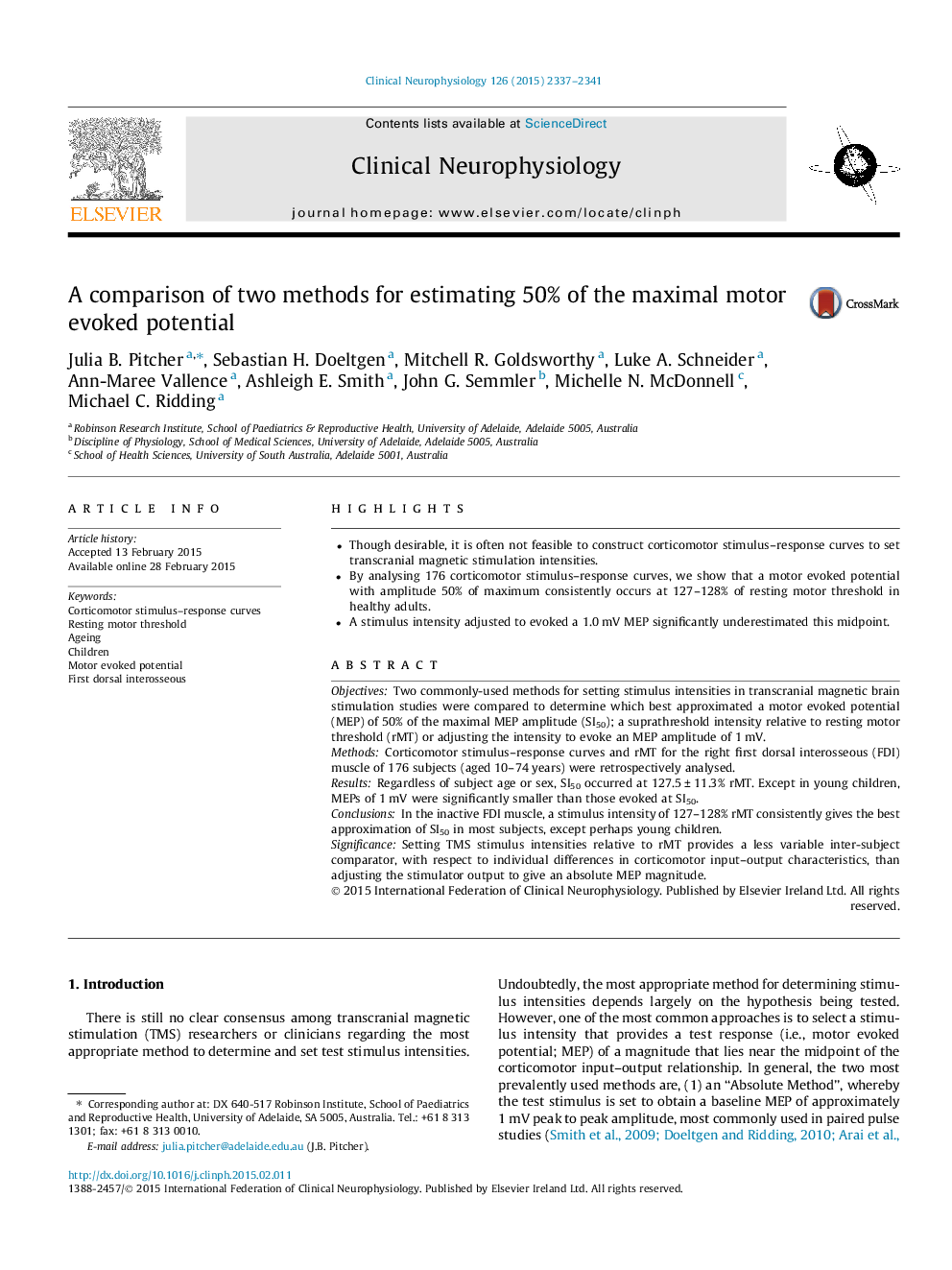| Article ID | Journal | Published Year | Pages | File Type |
|---|---|---|---|---|
| 3043146 | Clinical Neurophysiology | 2015 | 5 Pages |
•Though desirable, it is often not feasible to construct corticomotor stimulus–response curves to set transcranial magnetic stimulation intensities.•By analysing 176 corticomotor stimulus–response curves, we show that a motor evoked potential with amplitude 50% of maximum consistently occurs at 127–128% of resting motor threshold in healthy adults.•A stimulus intensity adjusted to evoked a 1.0 mV MEP significantly underestimated this midpoint.
ObjectivesTwo commonly-used methods for setting stimulus intensities in transcranial magnetic brain stimulation studies were compared to determine which best approximated a motor evoked potential (MEP) of 50% of the maximal MEP amplitude (SI50); a suprathreshold intensity relative to resting motor threshold (rMT) or adjusting the intensity to evoke an MEP amplitude of 1 mV.MethodsCorticomotor stimulus–response curves and rMT for the right first dorsal interosseous (FDI) muscle of 176 subjects (aged 10–74 years) were retrospectively analysed.ResultsRegardless of subject age or sex, SI50 occurred at 127.5 ± 11.3% rMT. Except in young children, MEPs of 1 mV were significantly smaller than those evoked at SI50.ConclusionsIn the inactive FDI muscle, a stimulus intensity of 127–128% rMT consistently gives the best approximation of SI50 in most subjects, except perhaps young children.SignificanceSetting TMS stimulus intensities relative to rMT provides a less variable inter-subject comparator, with respect to individual differences in corticomotor input–output characteristics, than adjusting the stimulator output to give an absolute MEP magnitude.
